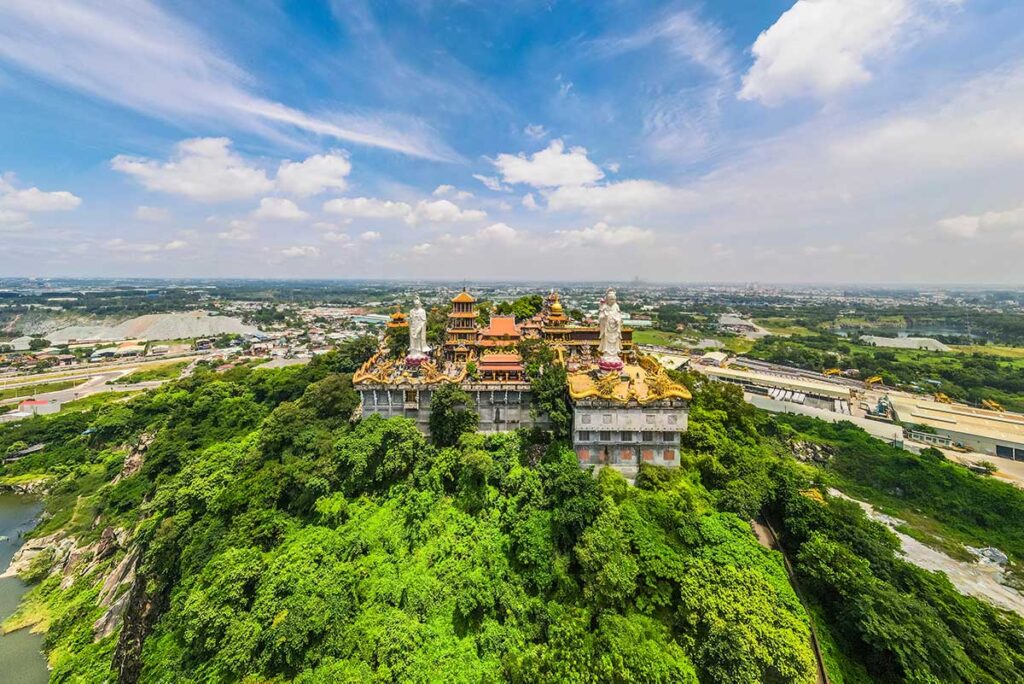What is Chau Thoi Temple?
Chau Thoi Temple is a Buddhist pagoda located on Chau Thoi Mountain in Binh Duong Province, roughly 12 kilometers from Bien Hoa and about an hour from central Ho Chi Minh City. Sitting 82 meters above sea level, the temple overlooks the Dong Nai River and the flat plains around it, giving visitors wide views that stretch across the southern landscape.
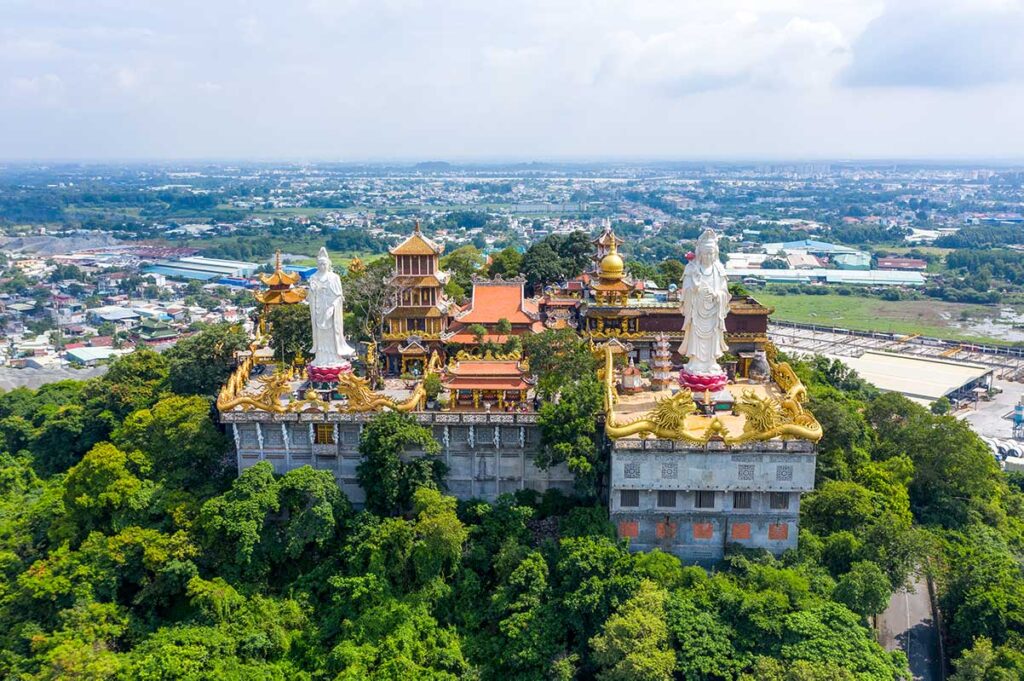
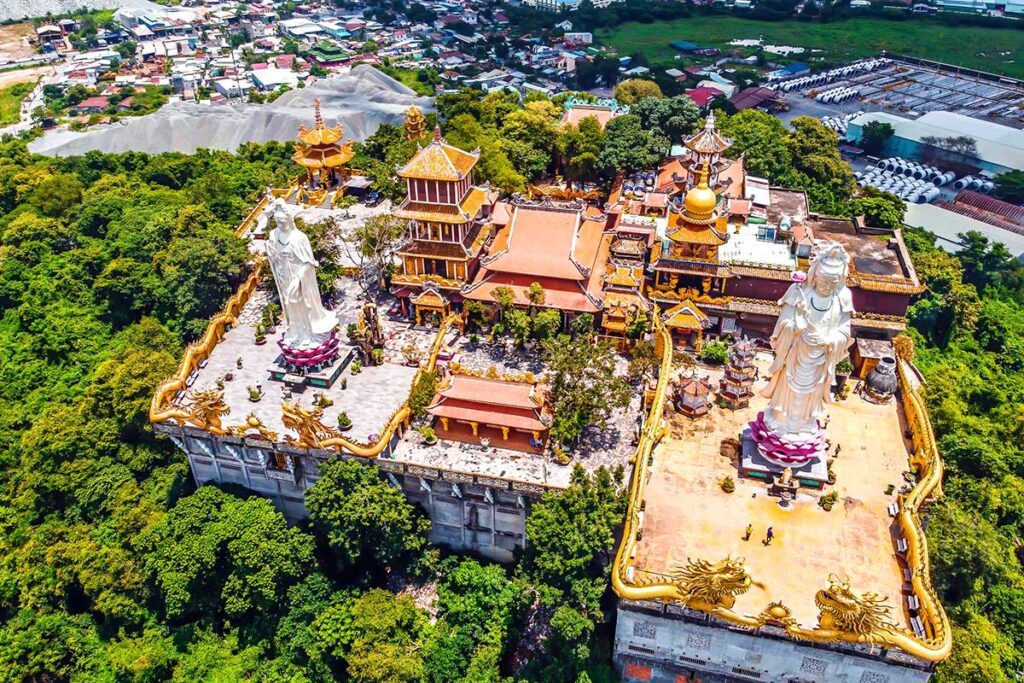
It is regarded as one of the oldest pagodas in Binh Duong, with origins dating back to the late 17th century. Over time it has been restored and expanded, but it remains an important spiritual site for local worshippers. The complex combines traditional Vietnamese temple architecture with large Buddhist statues scattered across the grounds, including a towering Guanyin that dominates the courtyard.
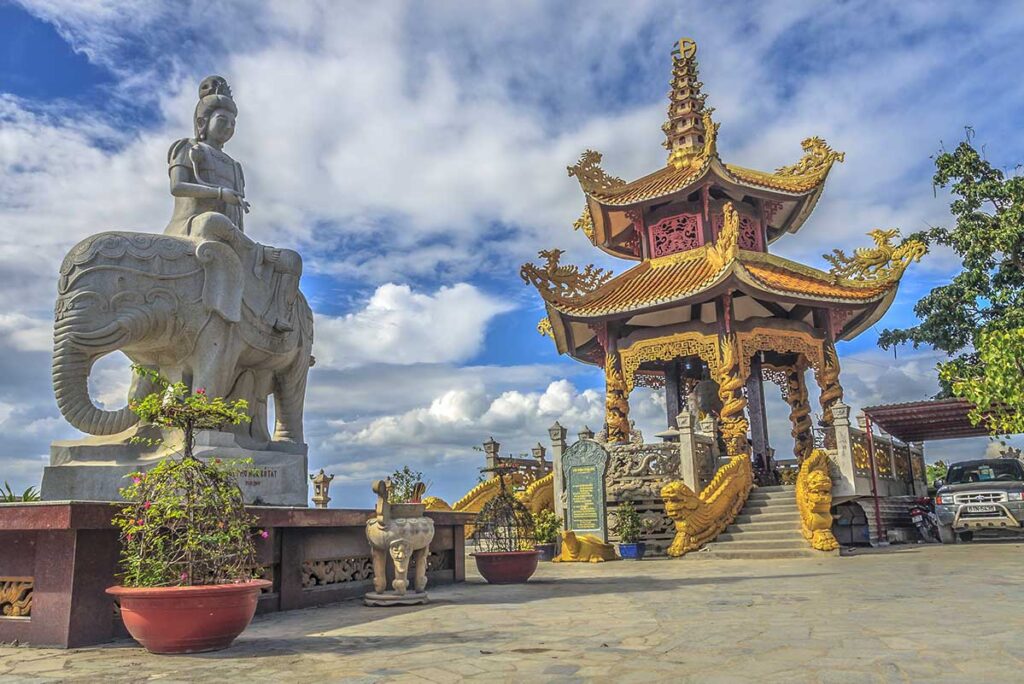
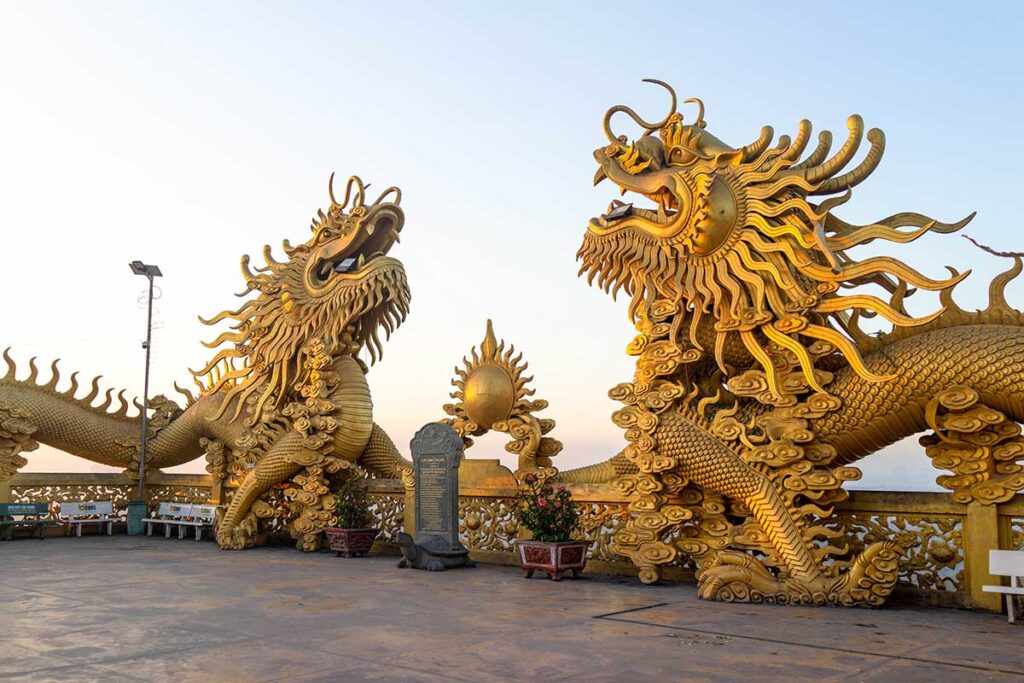
What sets Chau Thoi Temple apart is not just its age but also its character. Unlike the well-known pagodas inside Ho Chi Minh City, this hilltop temple sees very few tourists. Most people who come are local devotees, which gives the place an authentic and somewhat untouched atmosphere. The presence of wild monkeys adds an unusual twist—both charming and occasionally troublesome—and the elevated setting makes it feel far removed from the bustle of the city, even if the surrounding area is more industrial than scenic.
History of Chau Thoi Temple
Chau Thoi Temple has a long history that reflects both its religious and cultural importance in southern Vietnam. Most records say it was founded in 1681 by Monk Khanh Long, though some sources suggest an even earlier date of 1612. Over the centuries, the temple has been repaired and expanded many times, yet it continues to serve as a spiritual landmark for the region. In recognition of its historical value, it was officially listed as a national relic in 1989.
One of the most interesting stories connected to the temple is the legend of the “God Stone,” or Ông Tà. When monks and workers built the staircase path up the mountain in 1971, they encountered a massive rock that could not be moved. Instead of trying to destroy it, the abbot declared it a protective spirit of the mountain, and it has been left in place ever since. Today, locals still regard the stone as a guardian figure, and it is treated with respect and offerings.
Inside the complex, several ancient relics are preserved. These include three 18th-century stone Buddha statues, sets of Arhat figures, statues of the Ten Kings of Hell, and a centuries-old Guanyin carved from jackfruit wood. The temple also houses large bells, one modeled after the famous bell at Thien Mu Pagoda in Hue, used during ceremonies. Together, these relics give you a glimpse into both the artistry and devotion that have shaped Chau Thoi Temple through the ages.
Highlights of visiting Chau Thoi Temple
1. The climb and scenic views
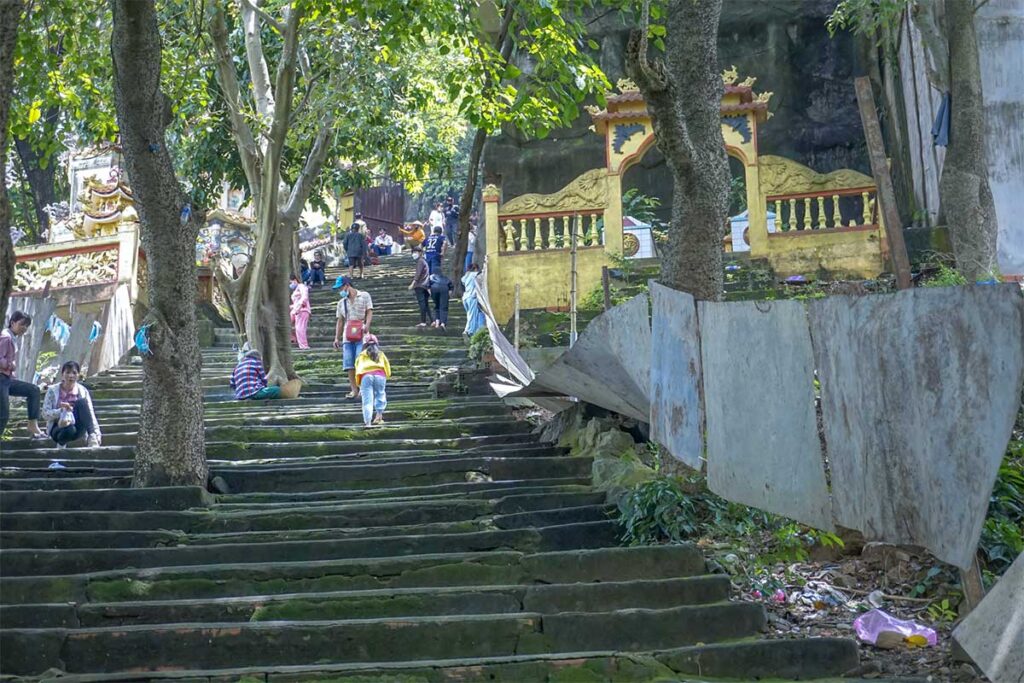
Reaching the temple is part of the experience. You can either walk up 220 stone steps shaded by trees or take the winding road that allows cars and motorbikes to reach the top. The staircase is not in perfect condition, so take care, especially after rain, but the climb does add to the sense of pilgrimage.
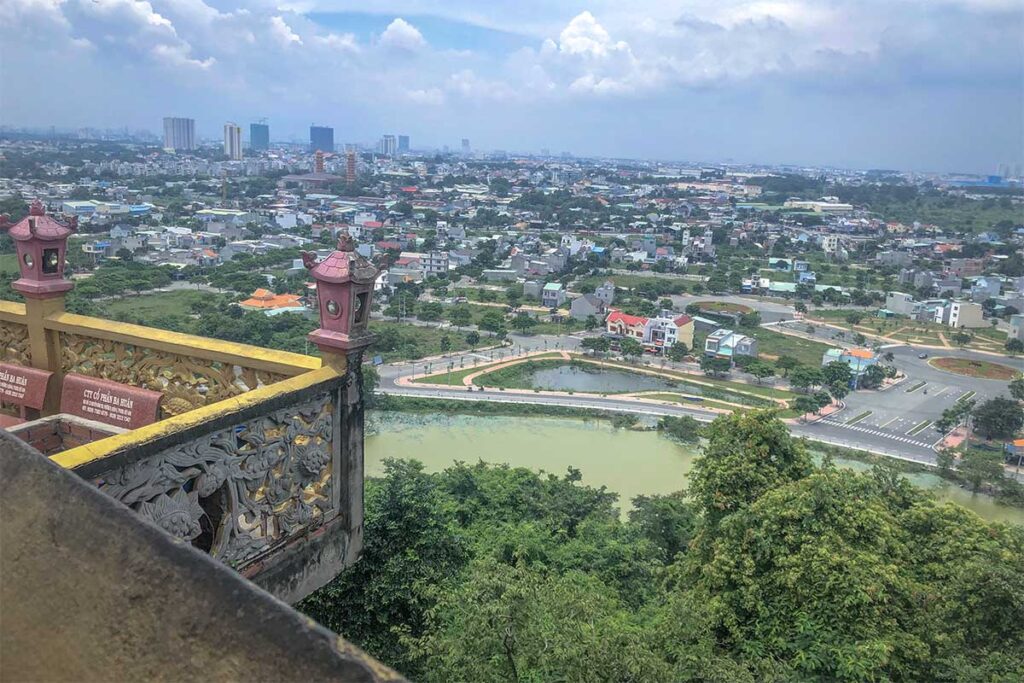
From the courtyard, there are broad views over the Dong Nai River, Bien Hoa City, and even the outskirts of Ho Chi Minh City. While the scenery around the mountain includes quarries and industrial zones, from above you can still enjoy a surprisingly peaceful outlook.
2. The main hall and architecture
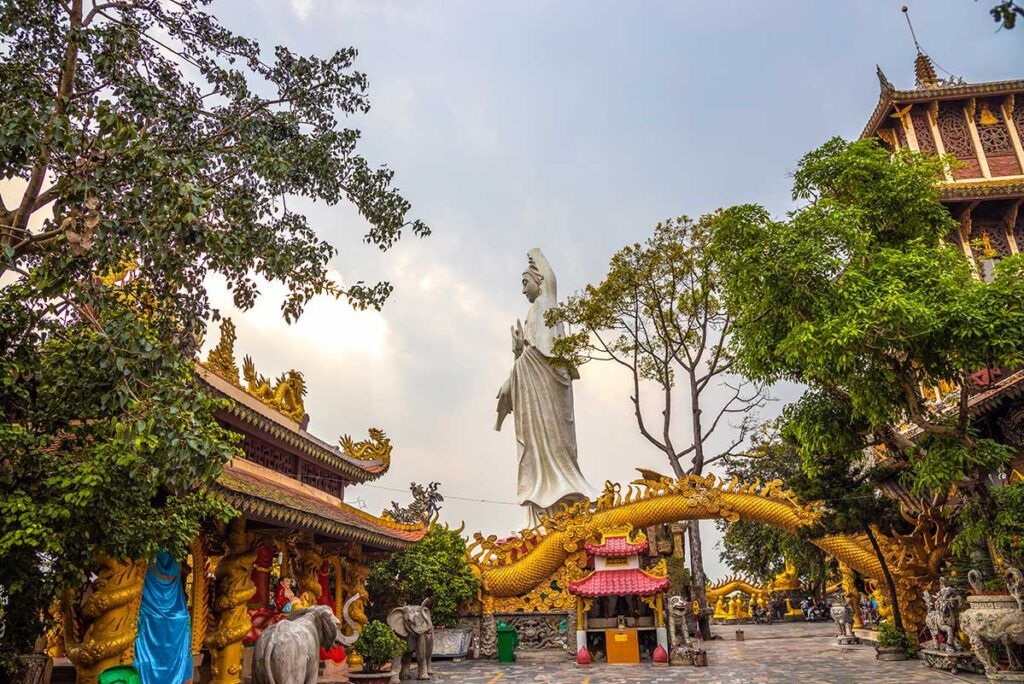
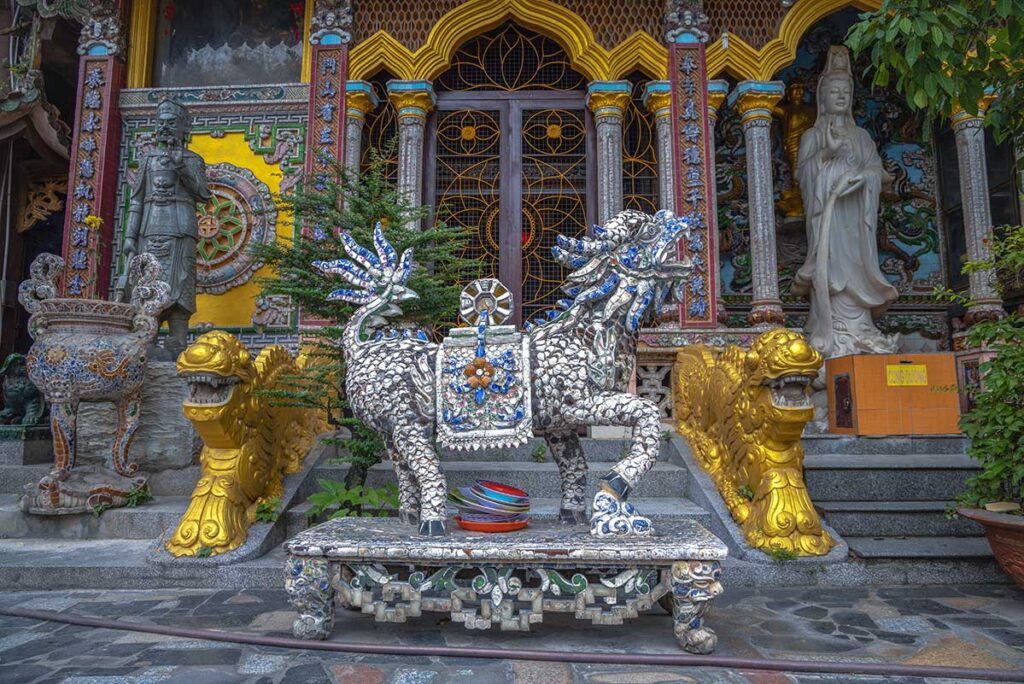
The temple complex follows a traditional Vietnamese pagoda style with a golden-yellow façade, curved tiled roofs, and ceramic inlays. On the main hall roof, nine dragons face outward in different directions, a symbolic design often seen in ancient pagodas. Decorative details feature dragons, phoenixes, and scenes from Buddhist lore, many inlaid with porcelain and glass. While not as polished as some famous temples in Hue or Hanoi, Chau Thoi’s architecture has a genuine charm and retains a spiritual atmosphere.
3. Sacred statues and relics
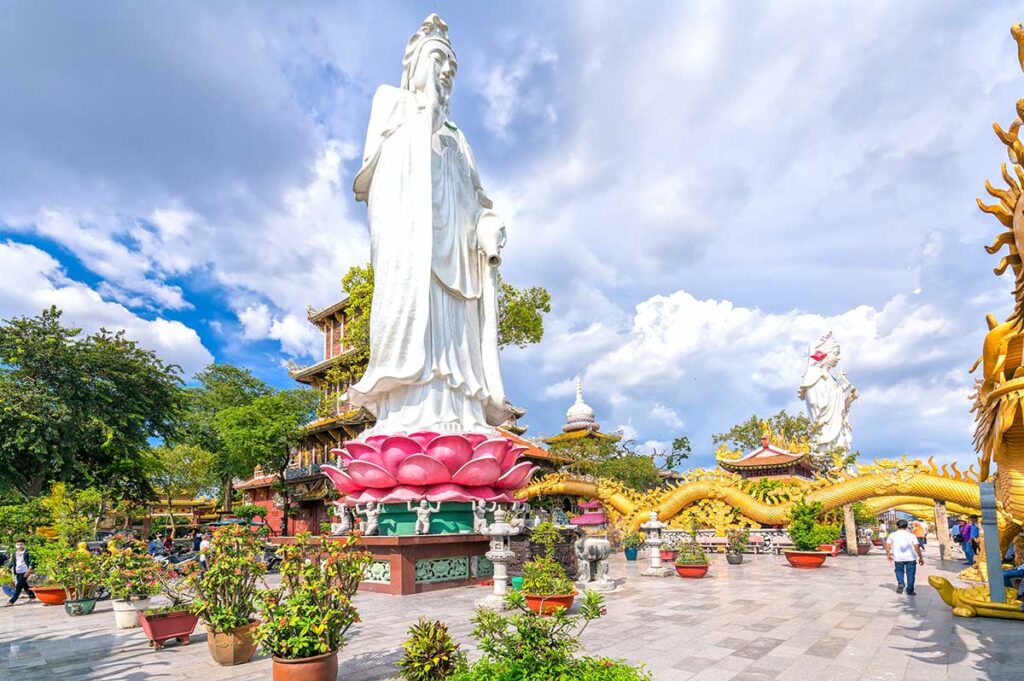
The grounds are dotted with statues, the most striking being the 22.5-meter-tall Bodhisattva Guanyin that towers over the courtyard. Inside, you’ll find a mix of ancient and more recent relics, such as Arhat statues, figures of the Ten Kings of Hell, and three stone Buddhas dating back to the 18th century. There is also a Ba Chua Xu statue carved from green stone, and a wooden Guanyin statue believed to be more than 100 years old. A four-story stupa rises above the complex, adding to the sense of scale.
4. Monkeys around the temple
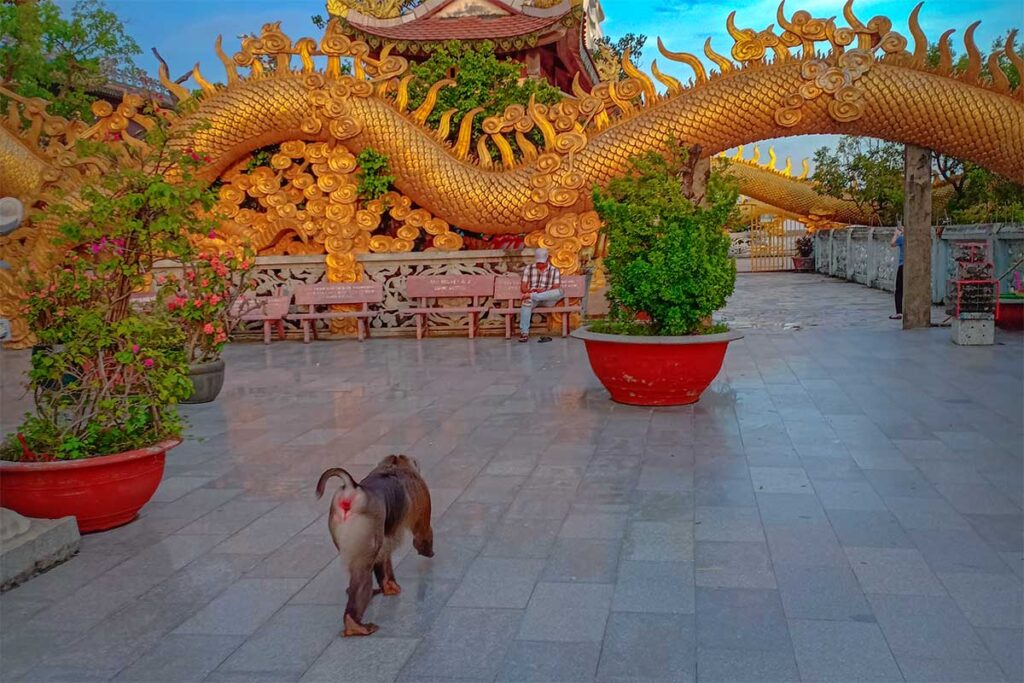

One of the unique (and sometimes inconvenient) aspects of visiting Chau Thoi Temple is the presence of wild monkeys. They roam freely around the mountain and temple grounds, often surprising visitors. While they can be entertaining to watch, they are known to grab food or even bite if approached. It’s best not to feed them or try to get too close—treat them as part of the setting rather than an attraction.
5. The bells
The temple also houses impressive bells that play a role in Buddhist rituals. The smaller bell was cast in 1988 and weighs 1.5 tons, modeled after the iconic bell of Thien Mu Pagoda in Hue. A second, larger bell weighing around 5 tons was added in 2003. Both are displayed prominently, and their deep tones add to the temple’s serene, spiritual character during ceremonies.
Practical visiting information
Location & Address
Chau Thoi Temple sits on Chau Thoi Mountain in Binh An Ward, Di An City, Binh Duong Province. It’s around 12 km from Ho Chi Minh City (depending on where you start) and only about 5 km from Bien Hoa City.
Opening hours
The temple is generally open daily from early morning until late afternoon or early evening. Exact hours aren’t posted, so it’s best to plan your visit in the daytime.
Entrance fee
There is no official entrance fee. However, small donations are welcome and go toward temple upkeep.
Dress code
Like other temples in Vietnam, modest dress is expected. Shorts and skirts are not allowed inside the halls, and staff may refuse entry if you are not dressed appropriately. A light scarf or wrap can be useful if you’re unsure.
Beware of the monkeys
Monkeys roam freely around the temple grounds. While they add character to the place, they can also be aggressive. Keep food hidden, avoid direct interaction, and do not try to feed them. Bites have been reported, and rabies shots may be needed if you are unlucky enough to get too close.
Crowds & Maintenance
On Sundays and Buddhist festival days, the temple can get very crowded with local worshippers, making parking and moving around more difficult. On weekdays, it’s usually quiet. Maintenance is not perfect—worn signs, chipped steps, and litter are common. It doesn’t ruin the visit, but it’s worth knowing in advance so expectations are realistic.
How to get there
Chau Thoi Temple is about a one-hour drive from central Ho Chi Minh City (District 1), depending on traffic. It’s close to the Dong Nai border, so many visitors combine it with a stop in Bien Hoa rather than treating it as a stand-alone trip.
Private car or Grab
The most convenient option is to book a private car with a driver or use ride-hailing apps like Grab. These are usually cheaper than a metered taxi for this distance and give you more flexibility if you want to include other stops along the way.
Local bus
For those relying on public transport, Bus #5 runs between Ho Chi Minh City and Bien Hoa and passes near the temple. You’ll need to ask the bus assistant to stop close to the entrance and then walk about five minutes uphill. The “BusMap” app is useful to check routes and times, but schedules are not always reliable.
Driving motorbike
Experienced motorbike riders can also drive themselves. The ride is straightforward but involves busy highways and local traffic, so it’s only recommended if you are comfortable with Vietnam’s driving conditions. Parking is available at the top of the hill inside the temple grounds—avoid leaving your bike at the base of the mountain.
Combine with other sights
If you want to make a longer outing, you can combine a visit to Chau Thoi Temple with nearby attractions such as Buu Long Pagoda or the Buu Long Tourist Area in Bien Hoa. On the way from Ho Chi Minh City, another optional stop is Suoi Tien Theme Park, though it’s more of a family amusement park than a cultural site.
Is Chau Thoi Temple worth visiting?
Chau Thoi Temple is worth considering if you’re looking for an offbeat spiritual site near Ho Chi Minh City. Its hilltop setting, sacred relics, giant statues, and roaming monkeys make it quite different from the polished pagodas you’ll find in the city center. The panoramic views are a nice reward, especially if you climb the stairs, and the temple has genuine significance for local worshippers.
That said, it’s not a polished tourist attraction. Signs are faded, some steps are in poor condition, and litter around the grounds can detract from the experience. The surrounding area is also more industrial than scenic, so don’t expect a dramatic natural backdrop beyond the views from the mountain itself.
For most short-term visitors, there are more convenient and impressive temples in Ho Chi Minh City. But if you’ve already explored the main sights, have extra time, and want to see a place that very few tourists visit, Chau Thoi Temple offers an interesting and authentic side trip. It’s best suited to those who enjoy quiet, local places rather than must-see landmarks.
